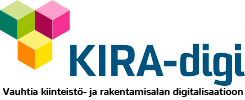Revision of land use planning process
In the experiment carried out by the Aalto University Department of Built Environment, the version management methods of software development are applied to the planning process.
What kind of problem is the project trying to solve?
The majority of improvements to the efficiency of land use planning focus on the development of technological support methods, such as planning data models and similar structured information and location data applications. In most cases, they are defined and integrated at the conditions of existing processes, and the technology used largely determines the validity of the data that can be collected of planned objects, how the planning targets are prioritised and how the effects of the plan are assessed.
New technological methods can detect bottlenecks or risky and labour-intensive phases in the process. When planning is supported by developing the planning technology, it is essential to review both the technological needs of the process and the possibilities and limitations of the technology with regard to the respective process.
The aim of the experiment is to find solutions to the problems detected in the interoperability between technology and planning processes.
Objective: Piloting the application of version management used in software development to planning process
The objective of the experiment is to apply the version management methods used in software development to the planning process. The idea is to test the possibility of processing various parts of plans in parallel, effectively study different solutions and document the development process of the plan and the information used in it in a structured revision history.
The experiment will result in a revision history of the creation of a plan map and its legend and the preceding refinement process of data in the form of a tree. The most prominent benefits include the commensurate nature of the information on the plans that is recorded, the possibility for the designers to review and understand measures taken earlier in the process, an updating and comprehensive overview of the situation, as well as the reduction of the designer’s cognitive loading, thanks to the outsourcing of the tasks to version management.
What is done in this project?
In the experiment, a prototype of a tool will be created for refining the data that ends up in the plan. Due to the schedule and resources allocated to the process, the early stage of the planning process was selected as the focus area.
The tool allows the planner to work on the data in the plan iteratively as a draft on a map view and to add essential descriptive data and attributes to the spatial objects.
What are the expected results of the experiment?
We are hoping that the experiment helps us to create a more holistic picture of planning.
We intend to use the results as a basis for developing more effective and functionally validated planning tools and the planning process itself. The results will also be used as a part of the academic research and development of planning technology.
Who benefits?
The experiment benefits municipalities, cities, developers of planning technology and researchers that focus on planning and systems that support planning.




